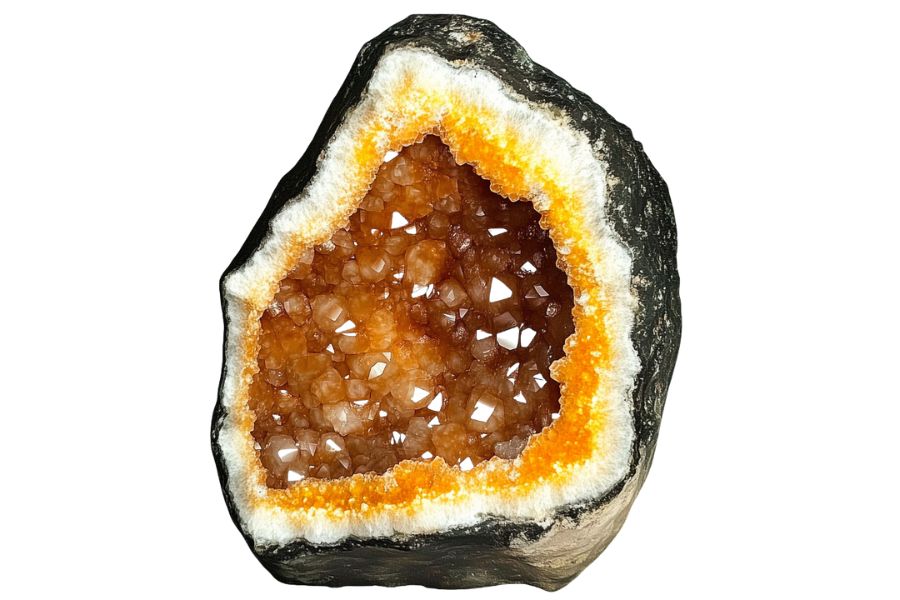Pennsylvania is a state full of history, from its role in the American Revolution to its rich mining heritage. But beyond coal and iron, the state also holds hidden gems. Among them is citrine, a golden-yellow variety of quartz that has caught the attention of rock collectors for years.
Some of the best places to find quartz, including citrine, are scattered across Pennsylvania’s landscape. The southeastern region, known for its mineral-rich ground, has been a hotspot for collectors.
If you know where to look, you might just uncover a brilliant piece of citrine waiting beneath the surface. From old mines to riverbeds, let’s explore the best places in Pennsylvania to find this striking stone.
How Citrine Forms Here

Citrine typically starts its journey as regular quartz crystal, but here’s the cool part – it gets its sunny yellow color through heat and radiation.
Most natural citrine forms when amethyst or smoky quartz gets heated by underground magma or other geological processes. The heat changes the iron impurities inside the crystal, transforming them from purple or gray to golden yellow.
This usually happens at temperatures between 470-560°C (878-1040°F). The amount of iron and the exact temperature determine how deep the yellow color becomes.
Most citrine we see in stores is actually heat-treated amethyst because natural citrine is pretty rare.
Types of Citrine
Citrine comes in a variety of shades, mostly categorized by its natural or heat-treated origin. This classification helps identify the characteristics and quality of each citrine specimen.
Yellow Citrine
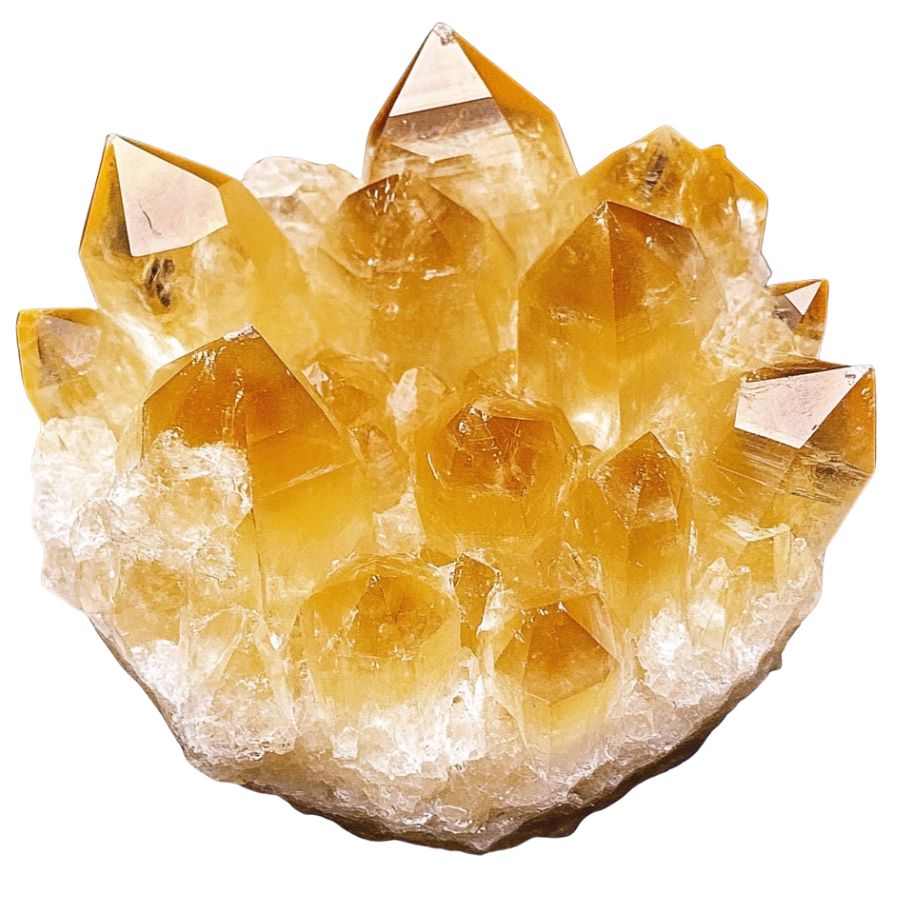
Yellow citrine displays a warm, sunny color ranging from pale yellow to deep golden. The most desired pieces show pure yellow tones without any brown undertones.
Natural yellow citrine gets its color from iron traces in its crystal structure, creating a softer and more subtle yellow compared to heat-treated stones.
The stone often exhibits excellent transparency and clarity, making it sparkle brilliantly in light. Most yellow citrine available today comes from heat-treated amethyst or smoky quartz, as natural specimens are quite rare. The heating process transforms the original purple or grey color into various yellow shades.
When examined closely, yellow citrine might show interesting internal features like liquid inclusions or tiny rainbow-like effects. These natural characteristics help gemologists identify untreated stones from heat-treated ones.
Each crystal typically forms with consistent coloring throughout, though some pieces may show subtle color zoning. This even distribution of color makes yellow citrine particularly attractive when cut into larger stones.
Lemon Citrine
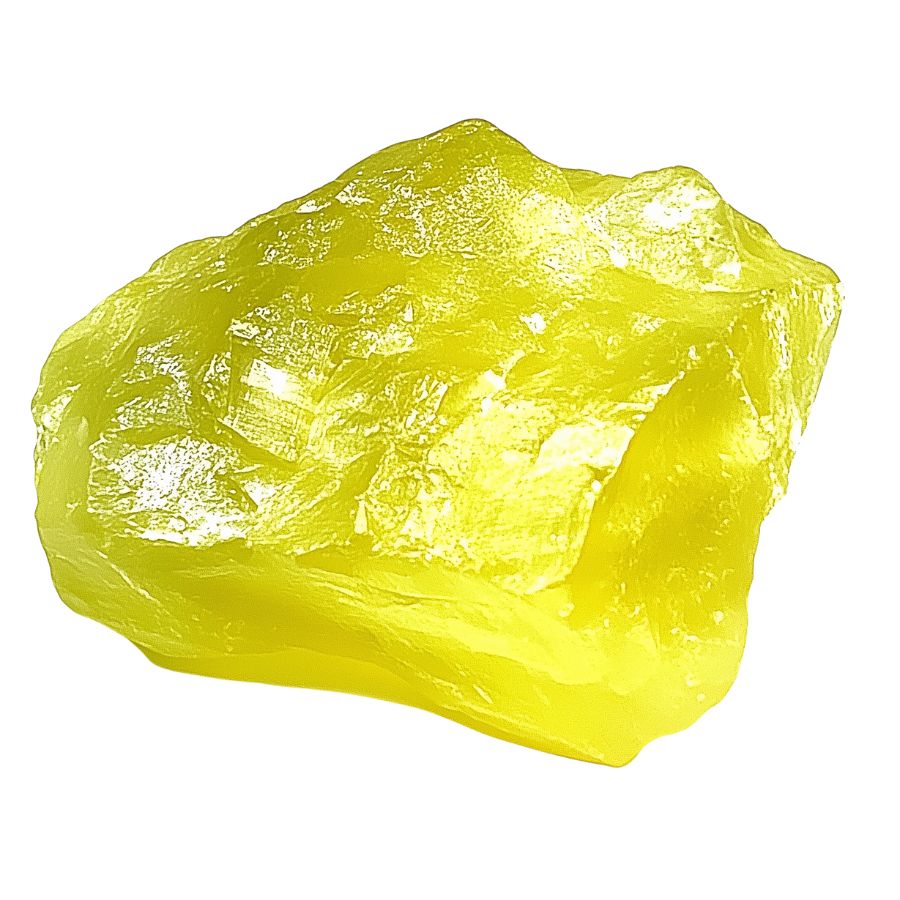
Lemon citrine showcases a bright, zesty yellow color that truly resembles fresh lemon peel. Its color is more vivid and lighter than other citrine varieties, making it instantly recognizable.
The stone appears particularly brilliant under natural light, where its true lemony brightness comes alive. The crystal structure allows light to pass through smoothly, creating a glass-like appearance that enhances its natural brightness.
Recent studies have shown that lemon citrine’s unique color comes from specific iron content levels in its structure. This precise chemical composition creates the distinctive lemon-yellow shade that sets it apart from other yellow gemstones.
The stone’s surface has a sleek, polished appearance that makes it appear almost wet or glossy. This natural shine, combined with its bright color, creates an eye-catching display that draws attention immediately.
Orange Citrine
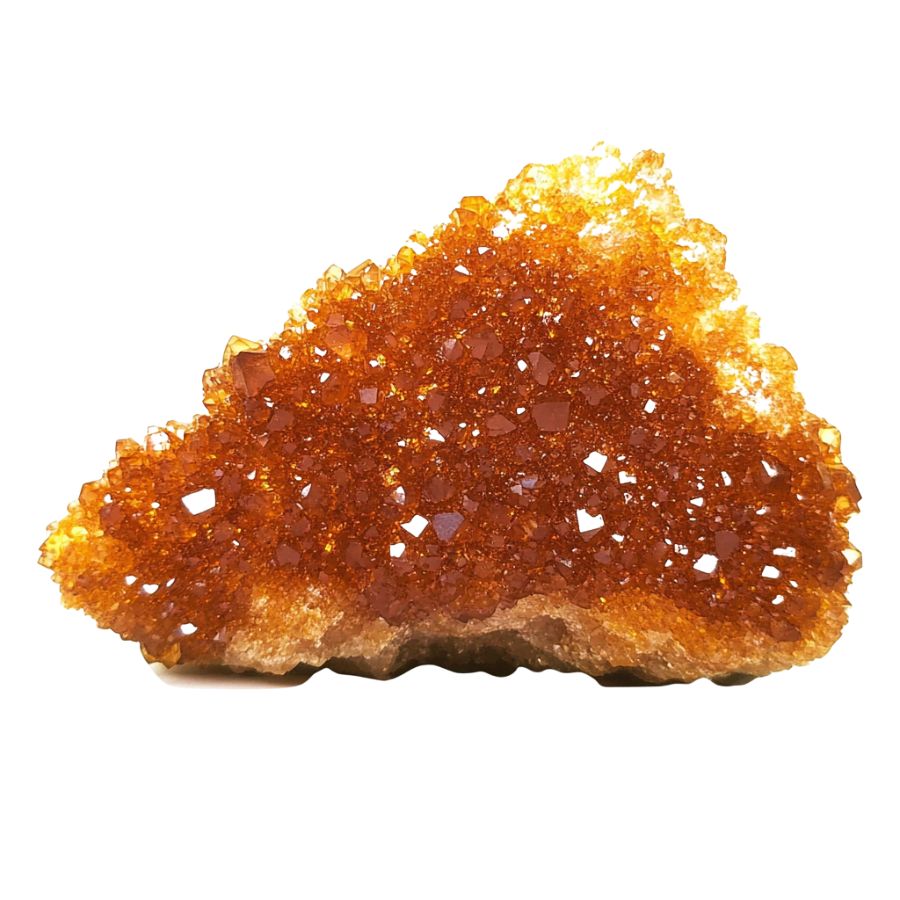
Orange citrine exhibits rich, warm tones ranging from honey-amber to deep mandarin orange. The most valuable pieces show a pure, saturated orange color without brown undertones.
Some specimens show interesting color zoning, where different intensities of orange create natural patterns within the stone.
Many orange citrines display a phenomenon called pleochroism, where the stone shows slightly different colors when viewed from different angles. This optical effect adds depth and character to the stone’s appearance.
Scientists have found that orange citrine’s color stability is remarkably high, meaning it won’t fade over time with normal exposure to light. This makes it particularly valuable for collectors who want their specimens to maintain their vibrant appearance long-term.
Golden Citrine
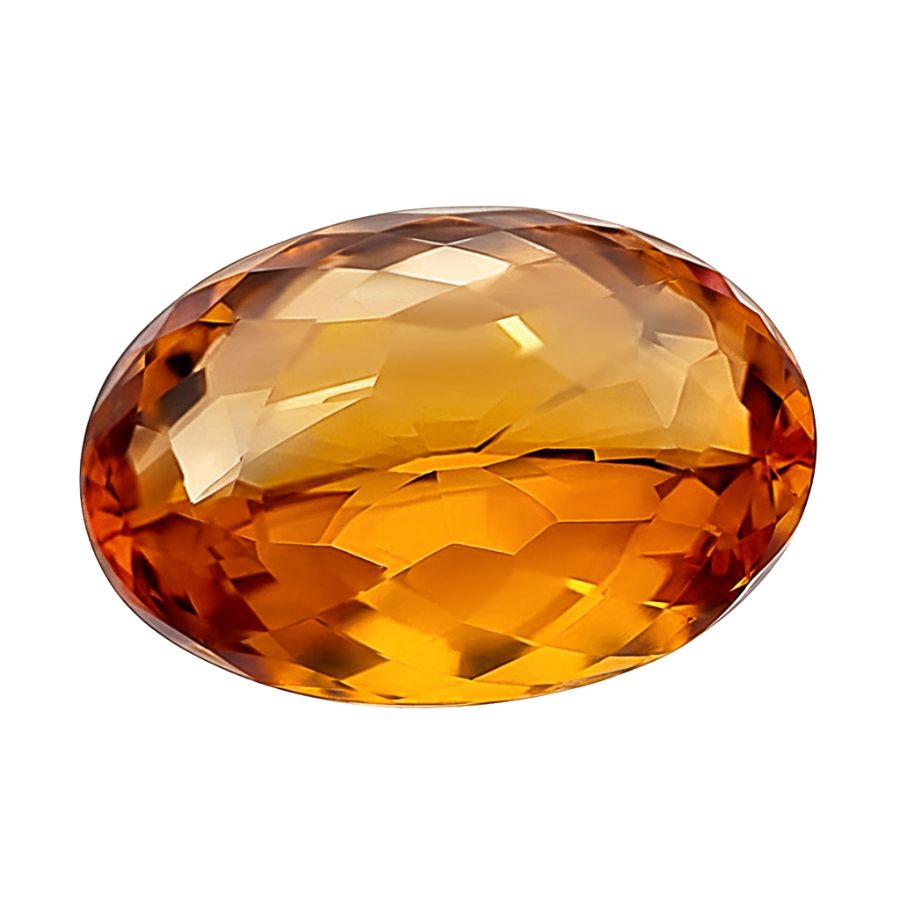
Golden citrine shows rich, warm tones reminiscent of honey or autumn sunlight. Its color ranges from champagne gold to deep amber, with the most prized specimens displaying pure golden hues without any brown tinting.
These stones often show interesting optical effects, including color zoning where different intensities of gold create natural patterns.
Some specimens display small needle-like inclusions that can create attractive silk-like patterns when viewed under proper lighting.
The stone’s internal structure often creates fascinating light effects, including subtle rainbow reflections and interesting play-of-color phenomena. Some specimens even show tiny internal prisms that create miniature rainbow effects when viewed closely.
Ametrine
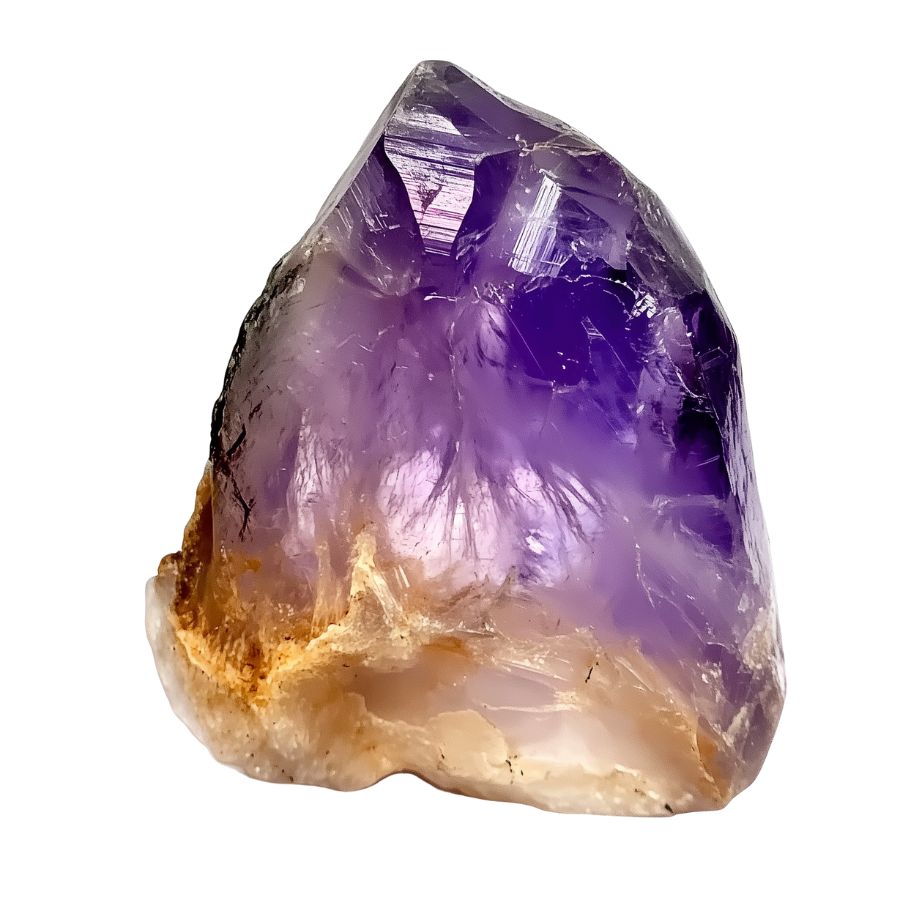
Ametrine showcases a fascinating blend of purple and golden-yellow colors in a single crystal. These colors exist in distinct zones rather than mixing together.
Temperature differences in the growing crystal caused some areas to develop purple coloring while others turned yellow. This natural process is extremely rare in gemstones.
When cut properly, ametrine can display dramatic color contrasts. Skilled stone cutters position these colors to create striking patterns. Some pieces show equal amounts of both colors, while others might have more of one shade than the other.
The colors in ametrine remain stable over time and don’t fade in sunlight. Each crystal shows slightly different patterns and color intensities, making every piece one-of-a-kind.
Madeira Citrine
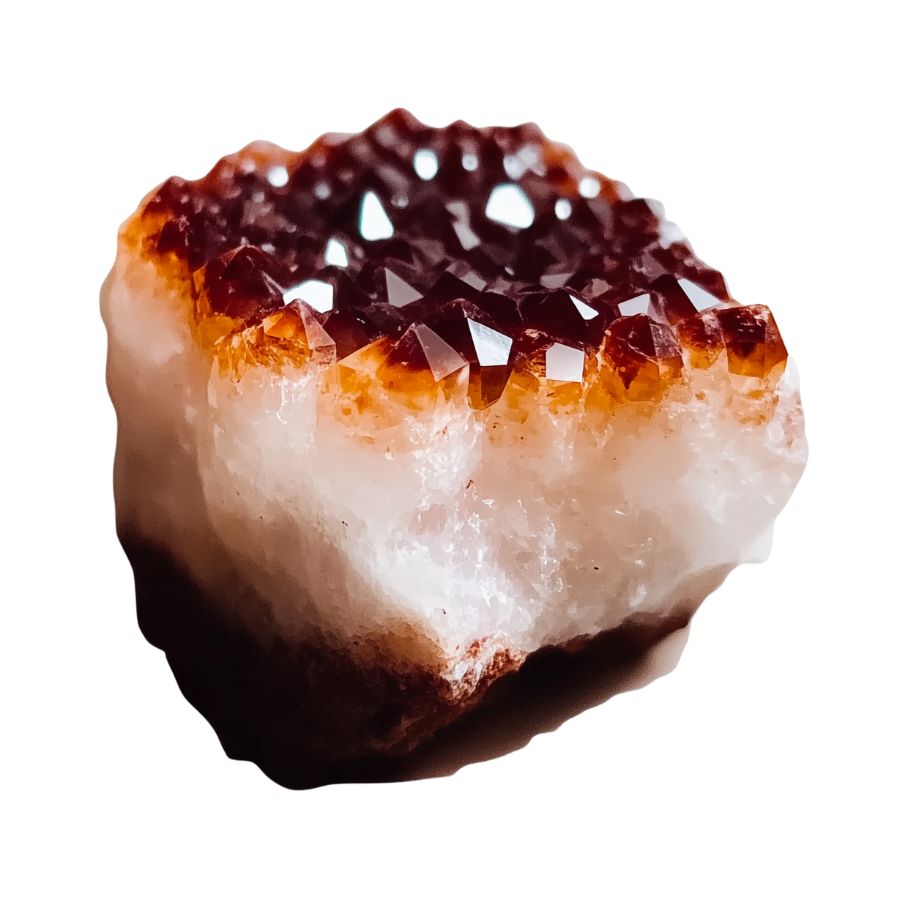
Madeira citrine displays rich, deep colors ranging from reddish-orange to brownish-red, similar to the warm tones of Madeira wine. This deep coloring sets it apart from lighter citrine varieties.
Most specimens on the market come from carefully heated amethyst, which transforms the purple color into these warm reddish tones. The heating process must be precisely controlled to achieve the desired color.
The stone often shows interesting internal features called liquid inclusions. These tiny pockets of ancient fluid got trapped as the crystal formed millions of years ago. Scientists study these inclusions to understand the conditions when the stone formed.
When examined closely, some Madeira citrine pieces display subtle color banding. These bands formed as the crystal grew in layers, creating natural patterns within the stone.
Palmeira Citrine
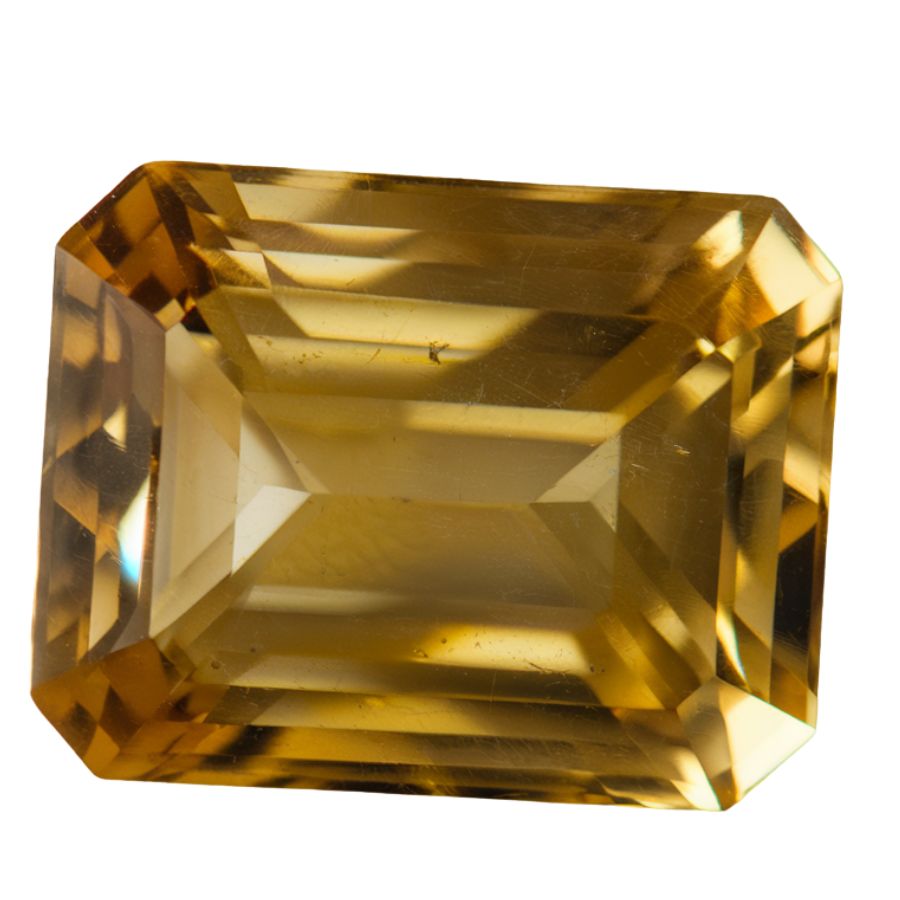
Palmeira citrine displays bright orange colors reminiscent of tropical sunsets. The color can range from light peach to intense tangerine, creating a warm, vibrant appearance.
Scientists have found that the particular shade develops under specific temperature and pressure conditions during formation. This makes natural specimens particularly rare.
Some Palmeira stones display a subtle color shift, appearing more yellow in natural light and deeper orange under artificial lighting.
The crystal structure often creates fascinating internal patterns. Some pieces contain tiny needle-like inclusions that create silvery reflections, while others might show natural growth lines that reveal how the crystal developed over time.
Rio Grande Citrine
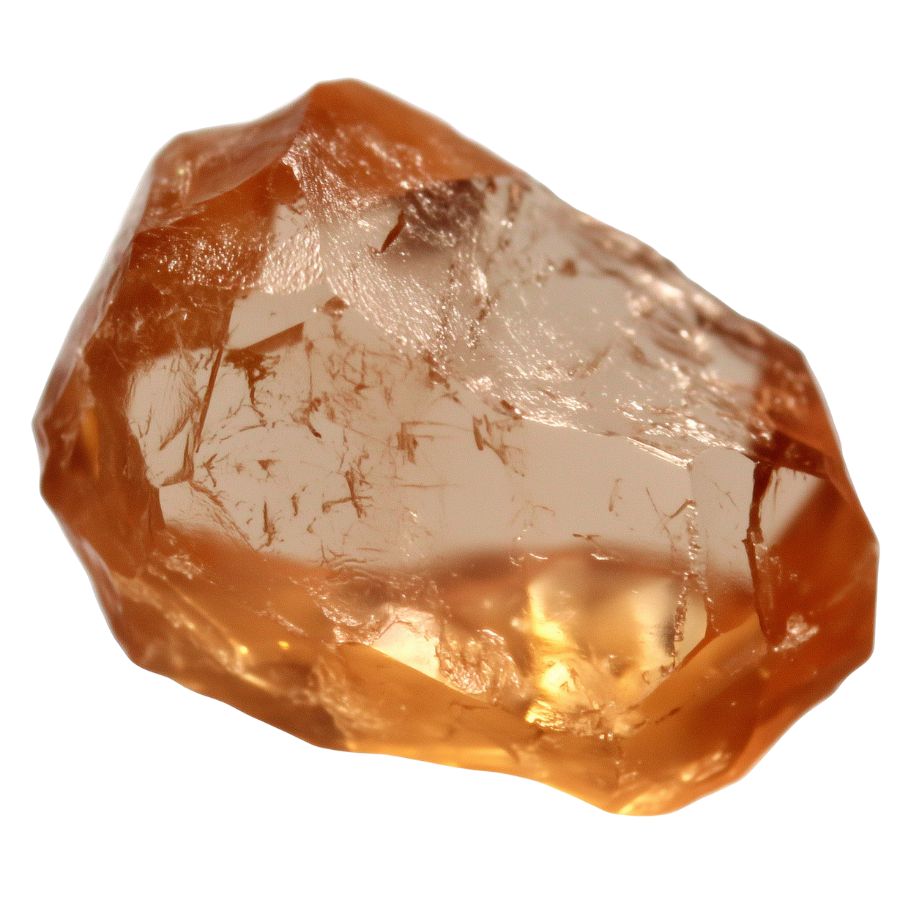
Rio Grande citrine presents a spectrum of yellow shades, from pale lemon to deep golden amber. The colors often appear more natural and softer than heat-treated stones, with subtle variations throughout the crystal.
Tiny crystals, ancient gas bubbles, and growth patterns can be found within the stone. These features help geologists understand the conditions under which the crystal formed.
The surface of Rio Grande citrine has a distinctive glossy appearance that makes light bounce off in interesting ways. When properly cut, it can show bright flashes of light called scintillation that make the stone appear to glow from within.
Some specimens display the effect where the yellow color appears to shift slightly when viewed from different angles. This subtle color play adds another dimension to the stone’s appearance.
What Rough Citrine Look Like?
Citrine crystals have unique identifying features that make them recognizable in their raw state. When searching for natural citrine, keep an eye out for these characteristics:
Check for the Distinctive Golden-Brown Color

Raw citrine has a warm, honey-like color ranging from pale yellow to deep amber-brown. Unlike heat-treated amethyst (which looks more orangey), natural rough citrine shows uneven color distribution.
Look for patches where the color seems to fade or intensify. You might spot some smoky zones too – that’s totally normal in natural pieces.
Examine the Crystal Structure
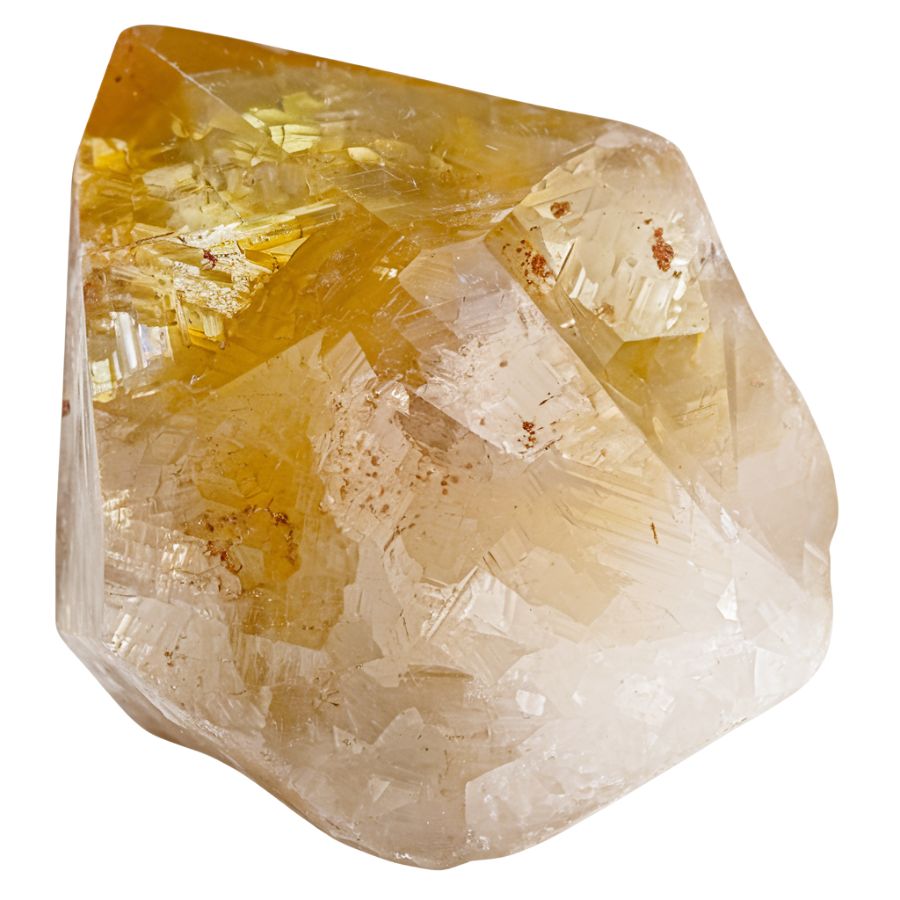
Natural rough citrine forms hexagonal crystals, often with one pointy end. The sides aren’t always perfect – look for striations (tiny parallel lines) running across the crystal faces.
Sometimes you’ll find specimens with multiple crystal points growing together, kinda like a cluster of pencil tips.
Look for the Telltale Surface Texture
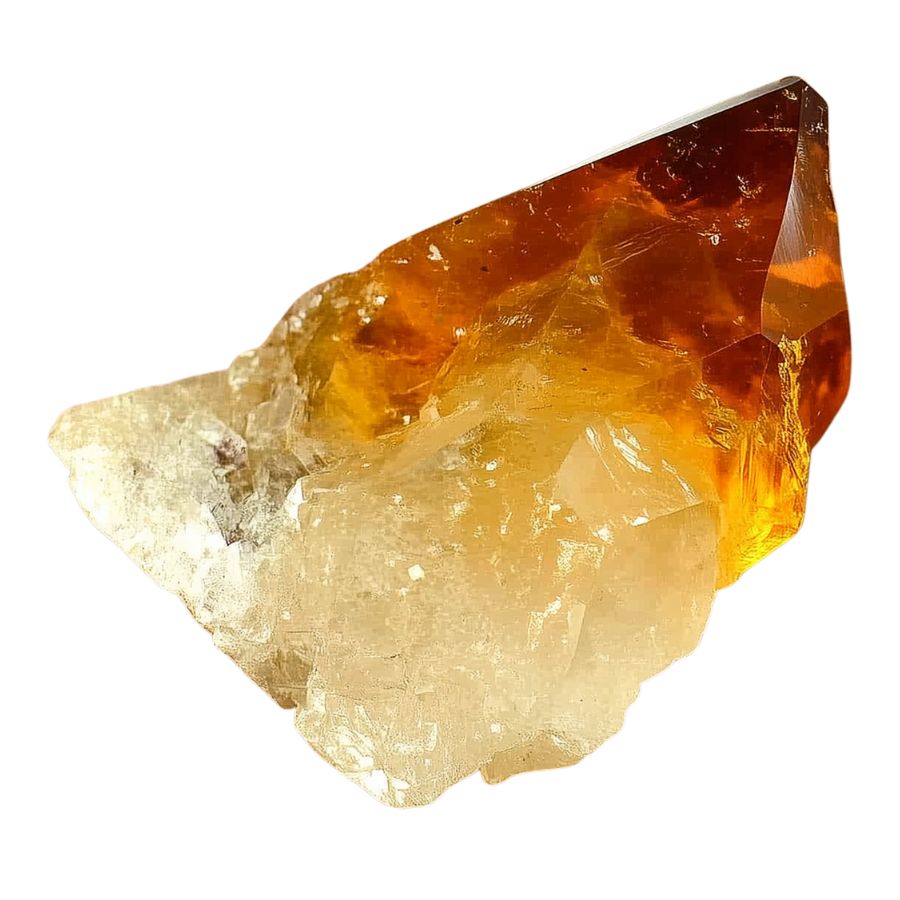
Raw citrine has a glassy surface with irregular breaks. Unlike quartz, which can be super glassy, rough citrine often has a slightly weathered look.
Run your finger over it – you should feel subtle variations. If it’s too smooth or has bubble-like inclusions, it might be glass.
Test the Hardness and Durability

Grab a steel nail or knife – citrine should resist scratching (it’s a 7 on Mohs scale). Try scratching a discreet spot. If it marks easily, you’re probably looking at calcite or another softer mineral.
Real citrine stays cool to touch longer than glass imitations, so hold it in your palm for a minute.
A Quick Request About Collecting
Always Confirm Access and Collection Rules!
Before heading out to any of the locations on our list you need to confirm access requirements and collection rules for both public and private locations directly with the location. We haven’t personally verified every location and the access requirements and collection rules often change without notice.
Many of the locations we mention will not allow collecting but are still great places for those who love to find beautiful rocks and minerals in the wild without keeping them. We also can’t guarantee you will find anything in these locations since they are constantly changing.
Always get updated information directly from the source ahead of time to ensure responsible rockhounding. If you want even more current options it’s always a good idea to contact local rock and mineral clubs and groups
Tips on Where to Look
Citrine can be found in several accessible locations. Here’s where you should start looking:
Mining Sites
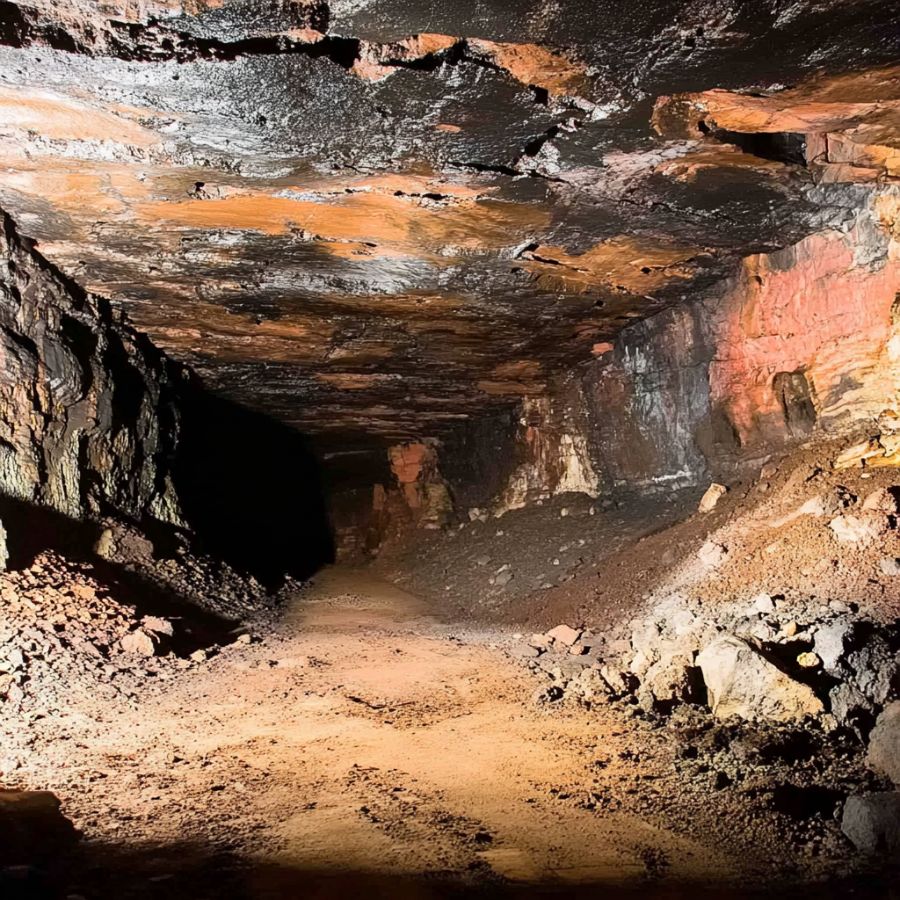
Look for old abandoned mines. These spots often have citrine deposits. Check if there’s any volcanic activity history in the area – that’s a good sign.
Most mining sites have quartz deposits, and since citrine is a type of quartz, you might get lucky.
Granite Outcrops
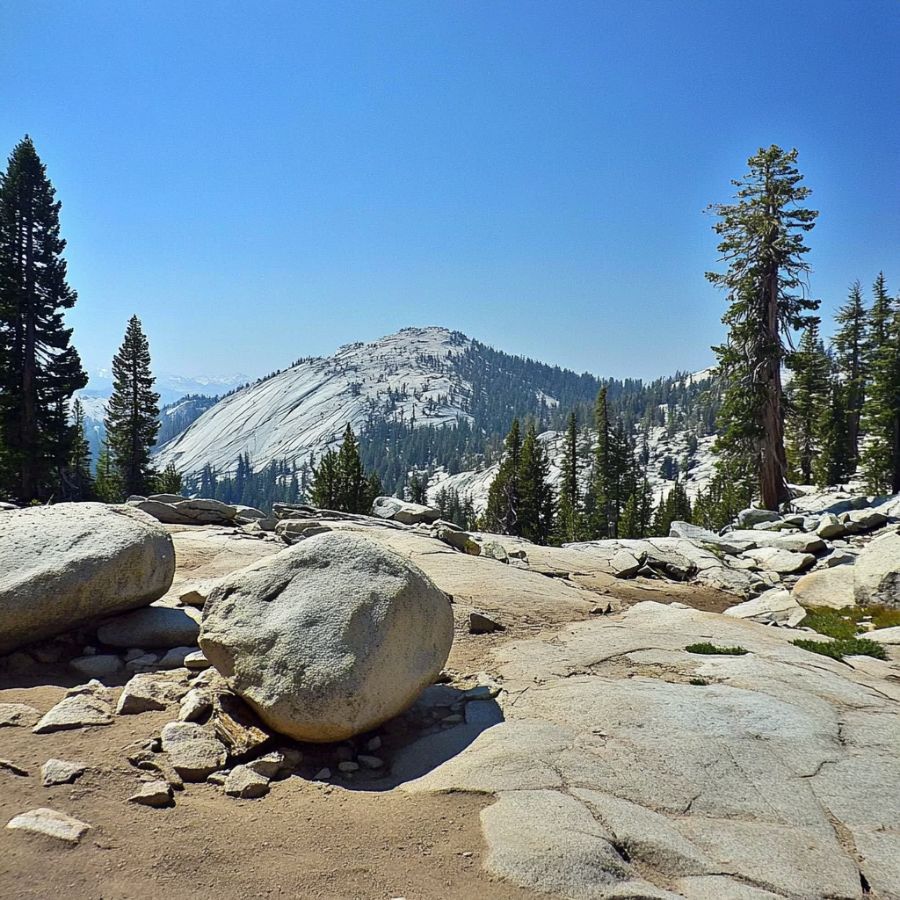
Granite areas are your best bet. These rocks often contain citrine in their cavities and cracks.
While exploring, pay special attention to areas where the rock appears more weathered or broken, as these spots tend to reveal hidden crystal pockets more easily.
Stream Beds

Check stream beds after heavy rains. The water washes down minerals from higher ground.
Look for areas where water slows down – that’s where heavier minerals settle. Use a pan or sieve to sort through gravel. The sparkly yellow stuff could be citrine.
Pegmatite Zones

These coarse-grained rocks often house citrine. Look for white, pink, or gray bands in rock faces. These bands usually indicate pegmatite presence. Break open rocks carefully – citrine might be hiding inside.
Some Great Places To Start
Here are some of the better places in the state to start looking for citrine:
Always Confirm Access and Collection Rules!
Before heading out to any of the locations on our list you need to confirm access requirements and collection rules for both public and private locations directly with the location. We haven’t personally verified every location and the access requirements and collection rules often change without notice.
Many of the locations we mention will not allow collecting but are still great places for those who love to find beautiful rocks and minerals in the wild without keeping them. We also can’t guarantee you will find anything in these locations since they are constantly changing.
Always get updated information directly from the source ahead of time to ensure responsible rockhounding. If you want even more current options it’s always a good idea to contact local rock and mineral clubs and groups
McAdoo
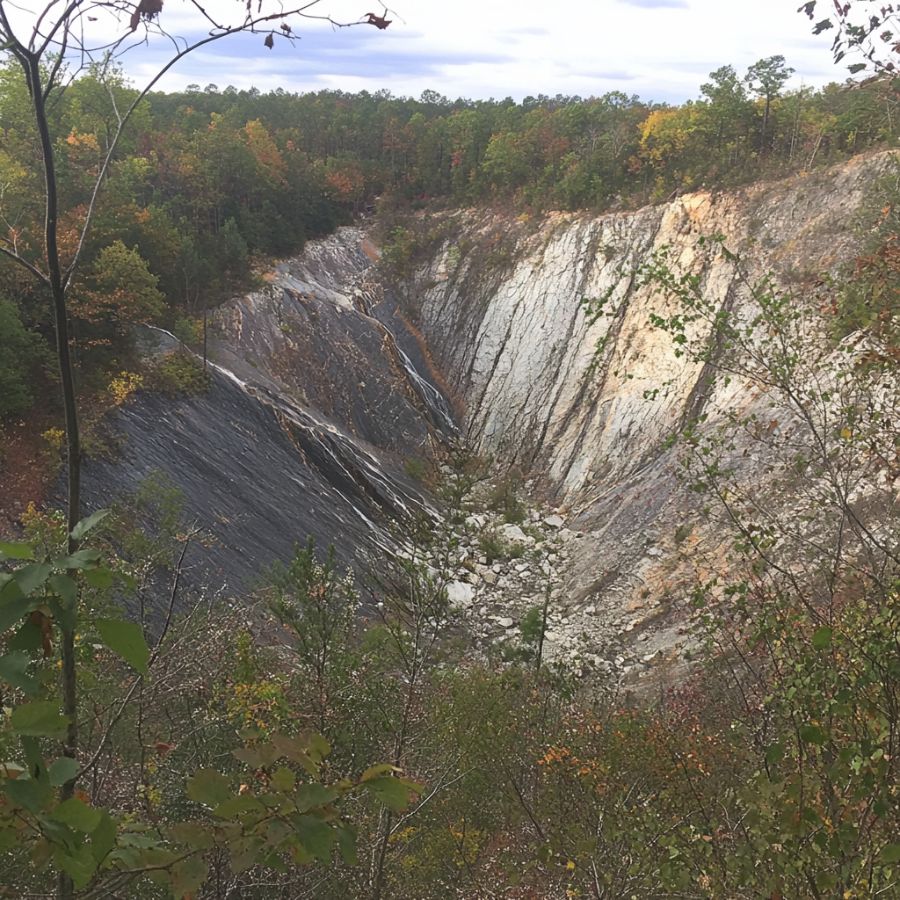
McAdoo, also called “The Echo,” is a great place for finding citrine. This area has rolling hills and old coal mines, making it a unique spot for rockhounding. The ground here contains mineral-rich veins, which sometimes have citrine crystals inside them.
Look near rock piles left from old mining work. Erosion has also uncovered deposits in exposed rock faces.
Search for yellowish or orange-tinted stones in cracks and loose soil. A rock hammer will help if you need to break rocks open.
Brookdale Mine
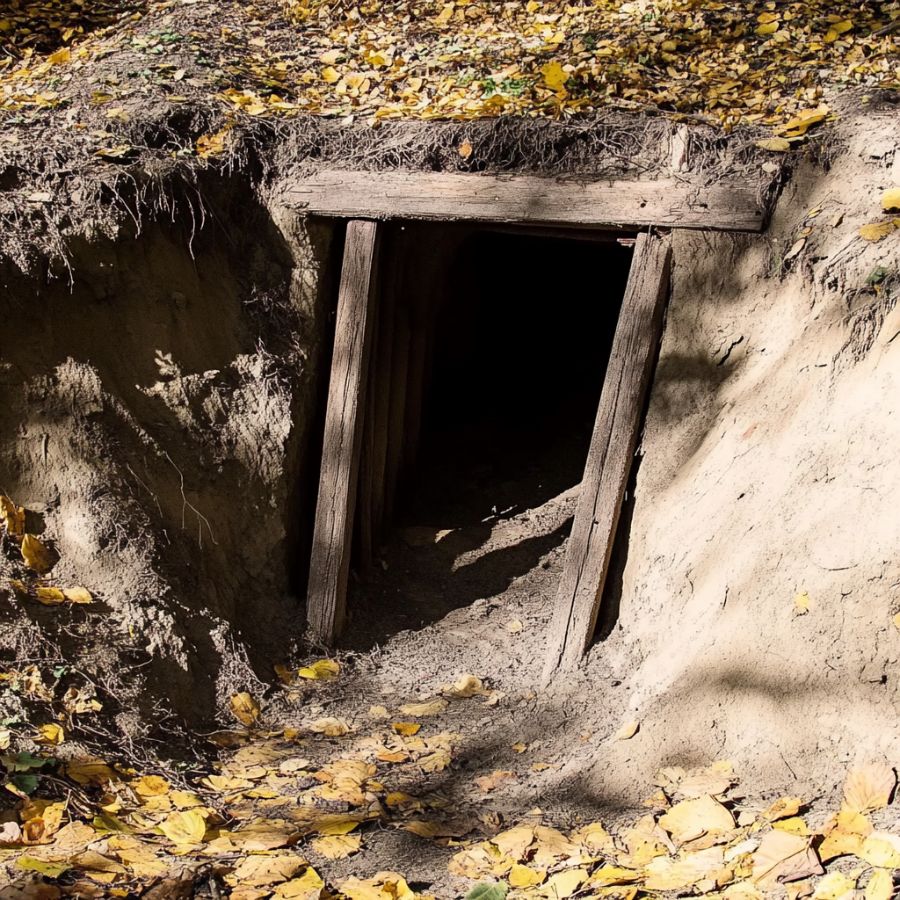
Brookdale Mine, located in a peaceful, forested area, is a well-known spot for gemstone collectors. This abandoned mining site has long been a source of various minerals. Over the years, mining activities have left behind large piles of discarded rock, known as mine dumps, where hidden treasures can still be found.
The best way to search for citrine here is by carefully sifting through these mine tailings. A small shovel, rock hammer, and sifting screen will be useful for sorting through the material.
Since mine dumps constantly shift due to weather and erosion, new discoveries can appear even in areas that have been searched before.
Ringtown Valley

Ringtown Valley is a great spot for rock collectors because it has a variety of gemstones and crystals. The hills and rocky terrain here contain deep mineral pockets where citrine can be found.
Citrine is often hidden inside crevices or scattered in loose soil near exposed cliffs. Old mine sites and naturally eroded areas are the best places to search. You might also find smoky crystals or feldspar in these spots.
With patience and careful searching, you can uncover some beautiful finds in Ringtown Valley.
Brandywine Creek

Brandywine Creek flows through Delaware and Chester counties, offering a scenic spot for rock enthusiasts. While amethyst is commonly found here, some collectors have reported discovering citrine as well.
The best way to search is by checking gravel bars along the edges of the creek, especially after heavy rainfall when new deposits are exposed. The movement of the water helps naturally polish the crystals, so make sure to keep an eye out for smoother stones as well.
Rossville

Rossville, located in York County, is known among rockhounds for its mineral-rich areas. One notable spot to search for gemstones is the Old York Road/State Route 4026 roadcut near Rossville.
Citrine here is usually found in clusters, sometimes alongside smoky quartz. Searching in areas with iron-rich rock formations increases the chances of finding citrine crystals.
After rain, newly uncovered stones may be easier to spot.
Places Citrine has been found by County
After discussing our top picks, we wanted to discuss the other places on our list. Below is a list of the additional locations along with a breakdown of each place by county.
| County | Location |
| Lebanon | Cornwall Iron Mines |
| Snyder | Mount Pleasant Mills |
| Northampton | Hellertown |
| Chester | Phoenixville |
| Delaware | Chadds Ford |
| Schuylkill | St. Clair Fossil Site |
| Lancaster | Manheim |
| York | Dillsburg |
| Lancaster | Pequea |
| Chester | Nottingham County Park |
| Lancaster | State Line Quarry |
| Chester | French Creek |
| Lancaster | Blue Ball |
| Berks | Birdsboro |

